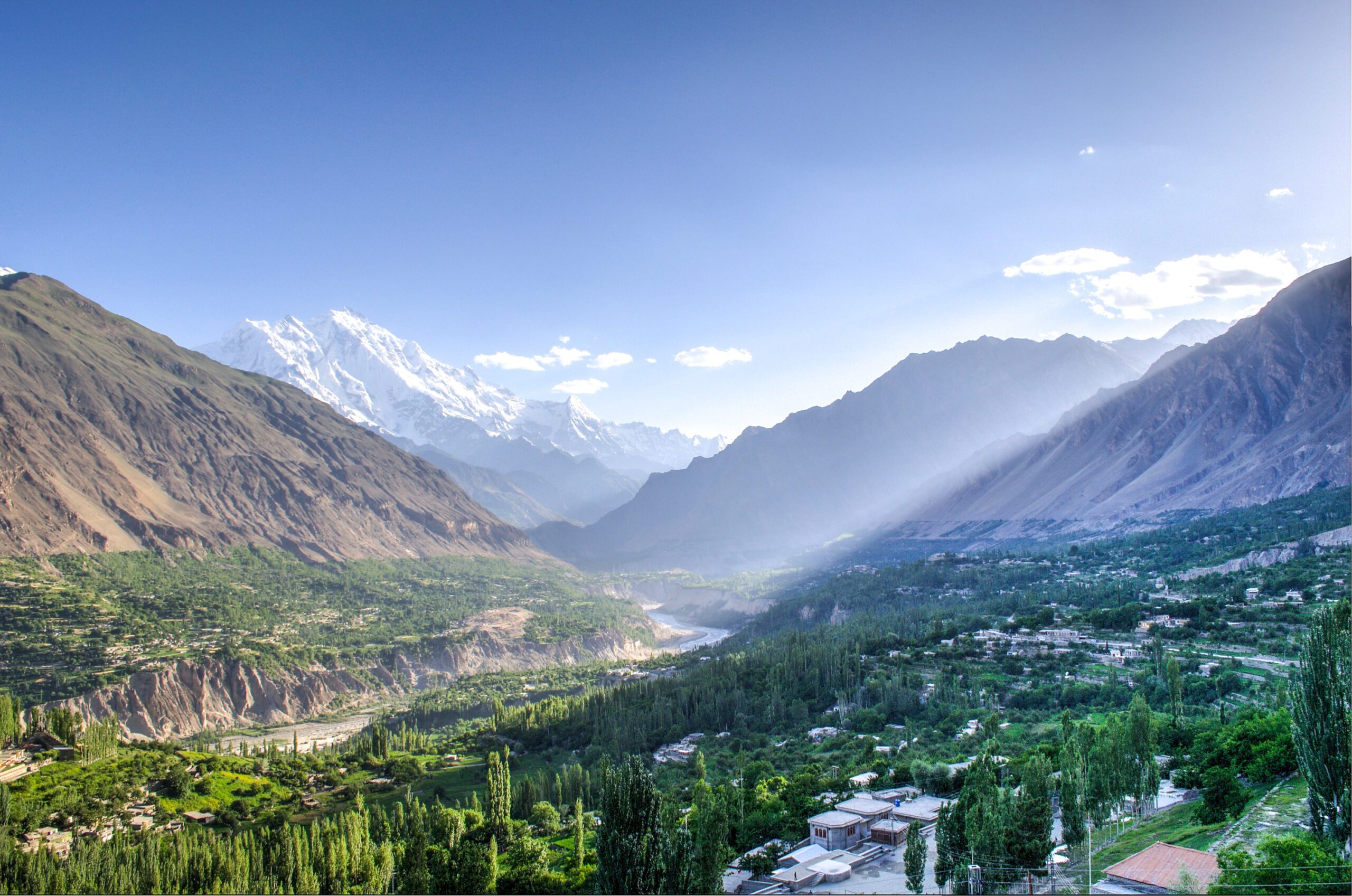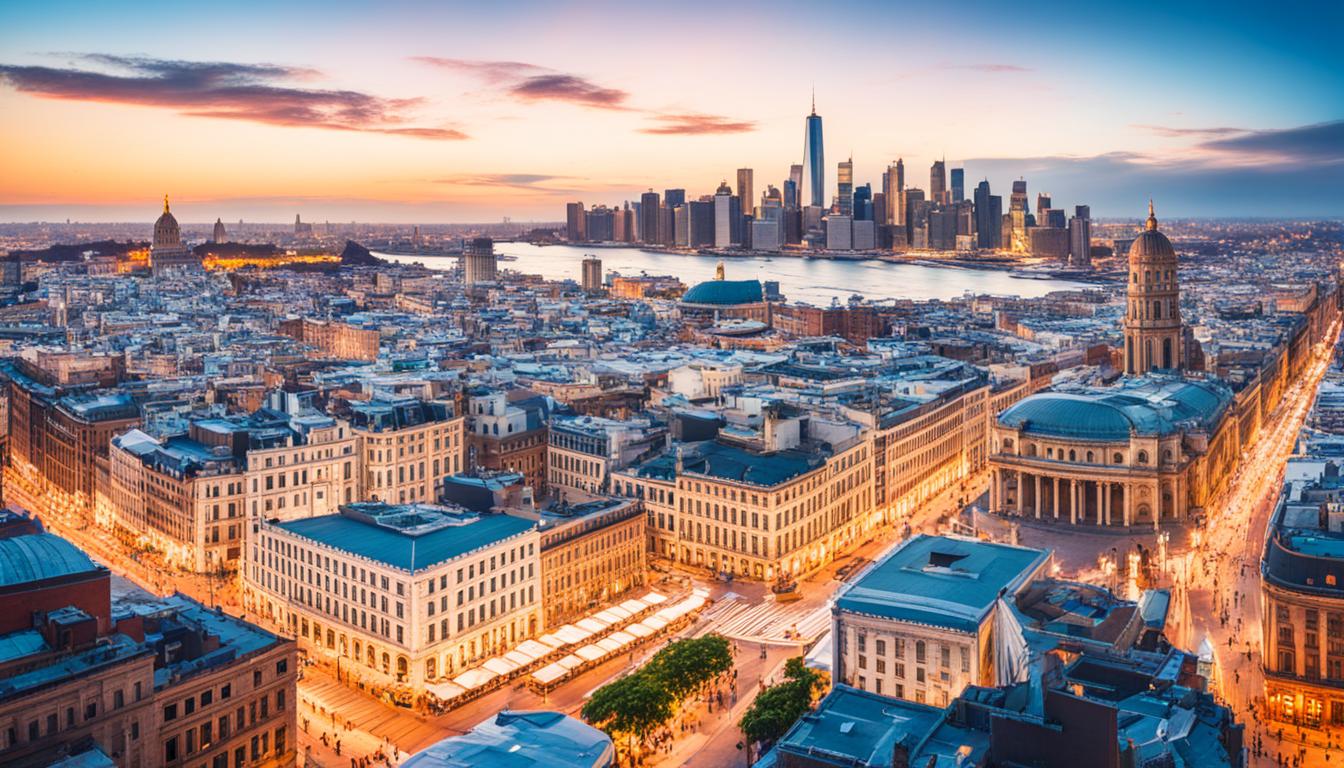
Table of Contents
Introduction to Spain
Spain is an important country located in Southwestern Europe. In many aspects, the rich culture and history allied with the striking landscapes of this country, plus great foods, make it so important to be identified with Spain. From the busy streets of Madrid, moving to Costa Brava shores, it is a destination that pushes many travelers to head straight to its country. Whether it is planning your holiday or developing curiosity about what makes Spain special, this article will take you through Spain’s food, famous travel destinations, and some of the frequently asked questions about the country.
Spain, officially referred to as the Kingdom of Spain, is a country located in Southern Europe. It borders France, Portugal, and the Mediterranean Sea. With an approximate population of more than 47 million, the country has a total area that makes it the fourth largest in Europe. Spain is an EU member nation whose capital can be named as Madrid. Here, the main official language followed is Spanish, although there are many regional languages also known as Catalan, Galician, and Basque.
Spain has an incredible culture, which was borne out of many civilizations developed by the Romans, Moors, and Visigoths. All this prosperity shows through in its architecture, food, and traditions, forming it into one of the most interesting places to visit.
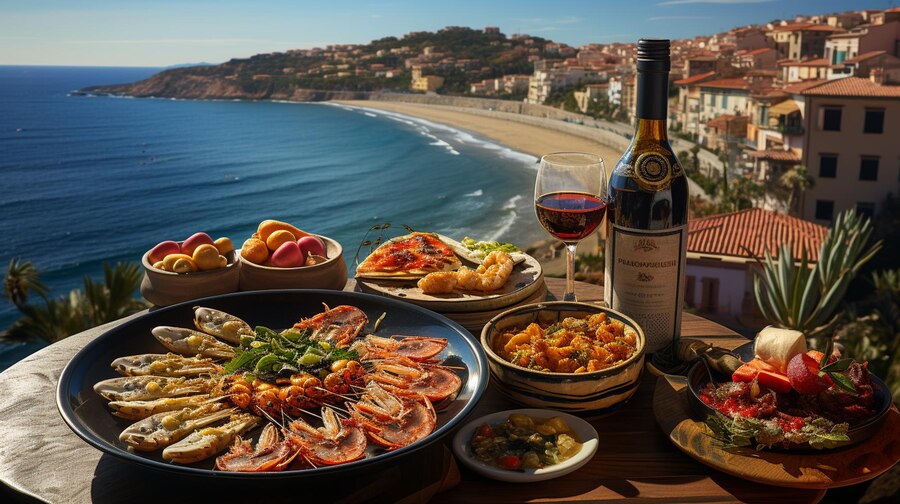
The Best Foods in Spain
One reason Spain is such a destination is the food. Food in Spain has so much flavor and variety, based on fresh local produce that give them solid and delicious dishes. Either it is street food or sitting in high-end restaurants, there always is something to taste for. Below are some of the best foods that you must taste while on holiday in Spain.
Tapas
Tapas are small portions served in any of the bars and restaurants spread throughout Spain. These might be as simple as olives and almonds while others may go elaborate, such as gambas al ajillo or garlic shrimp, and patatas bravas, which are fried potatoes with a spicy tomato sauce. Tapas form part of life for the Spanish. Locals tend to go from one bar to another, sampling many different varieties along with their wine or beer.
Paella
One of the most famous dishes in Spain, paella ranks among the top ten. It is Valencia’s native dish, cooked with chicken, rabbit, seafood, and vegetables. The recipe is done in a shallow, wide pan wherein the rice is allowed to absorb all flavors. Its pivotal ingredient, saffron, gives the yellow color distinctive to the dish. This is indeed a dish that can be shared, which makes it ideal for families or friends.
Churros
Churros are long fritters that are crispy on the outside and soft inside. They are usually powdered with sugar and served along a thick, hot chocolate sauce to be dipped into. Usually, churros are eaten either for breakfast or as a snack. In fact, they are sold in almost every café and food stall across the country.
Jamón Ibérico
Of course, the country is known for ham, and the most exquisite variety available in the market is that of Jamón Ibérico. The ham comes from black Iberian pigs, who are usually fed on acorns. This ham is air-cured for several years until it develops a deep, woody flavor. It is usually served in very thin slices and just on its own or as part of some bread.
Gazpacho
Gazpacho is a cold soup prepared with ripened tomatoes, cucumbers, peppers, onions, garlic, and olive oil, originating from Andalusia, Spain. Mixing them with vegetable choppings, they form the refreshing, healthy soup to be served during hot days.
Tortilla Española
The tortilla española is a simple yet very filling fare of potatoes, onions, and eggs. It could be eaten hot or cold, breakfast, lunch, or dinner-even as a snack or leftover. In any case, it will be thick and filling enough to cut into slices and thus eaten as tapas or part of a full meal.
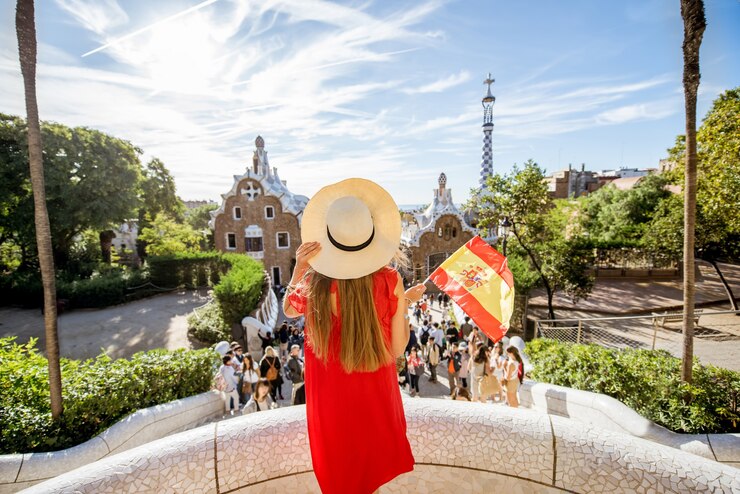
Top Travel Destinations
The country boasts some of the most beautifully historic cities in Europe, but art, history, and simply relaxing on the beach is all there. Let’s take a look at some of the top travel destinations.
Madrid
Madrid-the capital of Spain-is an extremely lively, culturally, historically, and artistically crammed metropolis. It is recommended to visit at least one of the following attractions: the Prado Museum houses the works of Goya, Velázquez, and other Spanish masters, or the Royal Palace, one of the largest in Europe. Worth visiting for its history, nightlife, and really good food.
Barcelona
Barcelona is the capital of Catalonia, an architectural hub and populous place in the country. The city basically has the huge basilica of the architect Antoni Gaudí, Sagrada Familia, making it prominent in the whole world. Besides this, it takes pleasure in a walk along the well-known pedestrians’ street Las Ramblas, busy with shopping and dining boutiques and street performance. It boasts beautiful beaches and offers the famous Park Güell that gives an excellent view of the city.
Seville
Seville is the capital of the region of Andalusia. Its prominence in culture is due to Moorish architecture, flamenco dancing, and festivals. Amongst all such identifiable features, perhaps the most iconic landmark of Alcázar of Seville is a royal palace that originated from construction by Moorish rulers. Another great view is a large Catholic cathedral-the Seville Cathedral-whose coincidence is that it is the largest Gothic cathedral in the world. The people of this city will dress up, put on masks, and dance through the morning in the popular annual Feria de Abril festival.
Valencia
Located on the sea, Valencia has modernist architecture and good food. Besides being the birthplace of paella, a cultural complex consisting of a planetarium, a science museum, and an aquarium known as the City of Arts and Sciences is there in Valencia. Gorgeous beaches, busy market, and Las Fallas, when gigantic papier-mâché figures were taken through the streets and burned, add to its glory.
Granada
Granada is an old city and home to one of Spain’s most beloved landmarks-the Alhambra.
The breathtaking complex of the Moor-built palaces, while very ornate in architectural style, is renowned for its beauty as well as its gardens. Granada is also famous for having the offer of free tapas with every drink in most bars in the city. The Sierra Nevada surrounds the city from all sides; hence, this place is very popular with fans of mountain hiking and skiing.
Bilbao
Bilbao is the largest city of the Basque Country, known for its architecture, being highly modernistic and having a wide range of cultural offerings. Probably the most famous attraction of this city is the Guggenheim Museum-a museum of contemporary art placed in a very futuristic building designed by Frank Gehry. It is also famous for its great food, and among traditional Basque dishes, there are things called pintxos-small snacks.
Costa del Sol
By its name itself, Costa del Sol translates to “Coast of the Sun” in English. It is a southern region of Spain where beautiful beaches and good weather abound. The area is also very popular among those tourists who would seek relaxation along the shores of the Mediterranean. Among many beaches, Costa del Sol boasts charming towns like Marbella and Málaga for everything history and culture to nightlife.
Canary Islands
The Canary Islands is a chain of islands lying off the coast of northwest Africa. The islands boast volcanic landscapes, black sand beaches, and tropical weather 365 days a year. Every island has its own style, but tourist magnets include Tenerife, Gran Canaria, and Lanzarote. Outdoor activities of the Canary Islands are no less impressive, from hiking and surfing to whale watching.
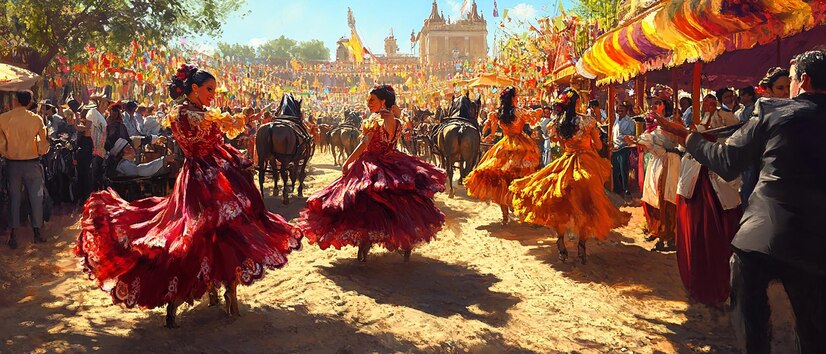
Famous Fiestas and Cultural Attractions
Spain is very celebratory; there are a lot of festivals and events happening throughout the year. Some of the most notable ones include:
La Tomatina
La Tomatina is one giant food fight where participants of this once a year festival held in the town of Buñol, Spain, throw tomatoes on each other. The event falls on the last Wednesday of August, and gathers participants from all corners of this globe. It’s a little messy but damn funny to participate in any event on the soil of Spain.
Running of the Bulls
This is part of the San Fermín festival, held every July in the city of Pamplona. It comprises one running with the route where various bulls have been let loose in the streets. It has been a risky tradition for over the centuries and attracts several thousands of tourists each year.
Flamenco Dancing
Flamenco is the traditional Spanish dance from Andalusia. It is characterized by its passionate movements and rhythmic footwork. You will get to see flamenco performances in most of Spain’s major cities and if tourists desire to do so, flamenco lessons are even available so that one may learn the art of this beautiful dance.
Semana Santa
Semana Santa, or Holy Week, is one of the main religious celebrations in Spain. It occurs in the week prior to Easter and consists of processions by religious statues in the streets. The most renowned processions in Seville occur with locals donning ritual garments and carrying candlesticks along the city’s streets.
Frequently Asked Questions (FAQs)
Q1. What is the best time to visit Spain?
It mainly depends on what you want to do. If you are into beaches and warm weather, the summer months of June to August would be ideal. These months are hot and pretty crowded, though. Spring-from March to May-and autumn-from September to November-are those periods of the year which are perfect for people who avoid strong heat and too many tourists.
Q2. Do I need a visa to visit Spain?
If you are a citizen of the European Union, then you don’t have to apply for a visa in order to gain entrance into Spain. Citizens of the United States, Canada, and Australia-who belong to other groups-can stay in Spain up to 90 days without applying for a visa. You will have to apply for a visa if your stay is longer than this duration.
Q3. What is the used currency in Spain?
The Spanish currency is the Euro. One can exchange money at banks, exchange offices, and even hotels. Also, you can withdraw money from an ATM if you have a debit or credit card.
Q4. Is Spain Safe to Travel?
Puesto todo, España es un país muy seguro para los turistas. However, it would not be superfluous to undertake some precautionary measures anyway. Be very aware of los carteristas-especially in places with large groups of tourists. It’s best to avoid late-night solitary walks in parts of town that you are not familiar with.
Q5. What language is spoken in Spain?
Spanish is Spain’s official language. Of course, most of the regions have their own respective languages: in Catalonia, it’s Catalan; in the Basque Country, it is Basque; and Galician is what is spoken in Galicia. In all of the tourist areas, there is a good deal of English spoken and many locals are at least familiar with it. However, learning some basic Spanish can be useful.
Conclusion
From beautiful beaches and landmarks to delicious food and lively festivals, Spain simply has it all. Whether you are interested in discovering the bustling cities or relaxing in a quiet village, Spain will have a little something for each kind of traveler. With its hot climate, friendly locals, and rich culture, no doubt Spain is among the most popular countries to visit in the world.
If you are really going to Spain, be certain you try the food from its soil, visit at least some of these landmarks, and go into the very energetic culture. There is no doubt that Spain will leave a lasting impression in your mind.

